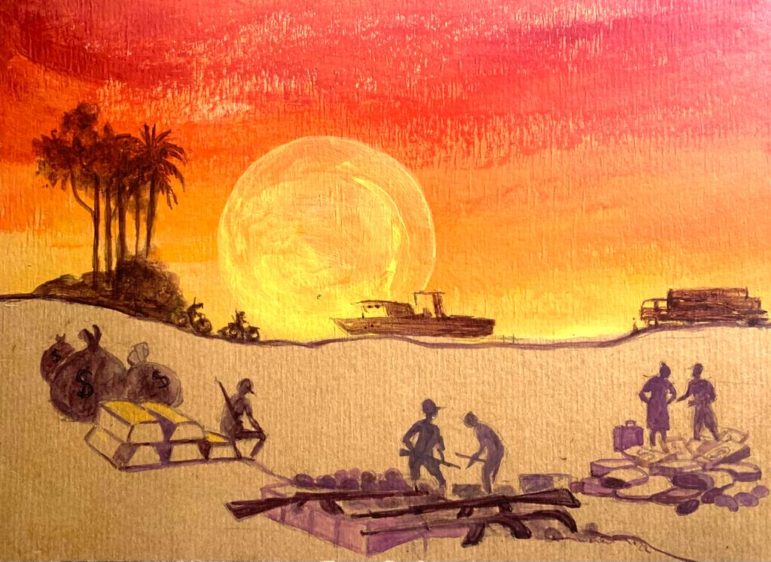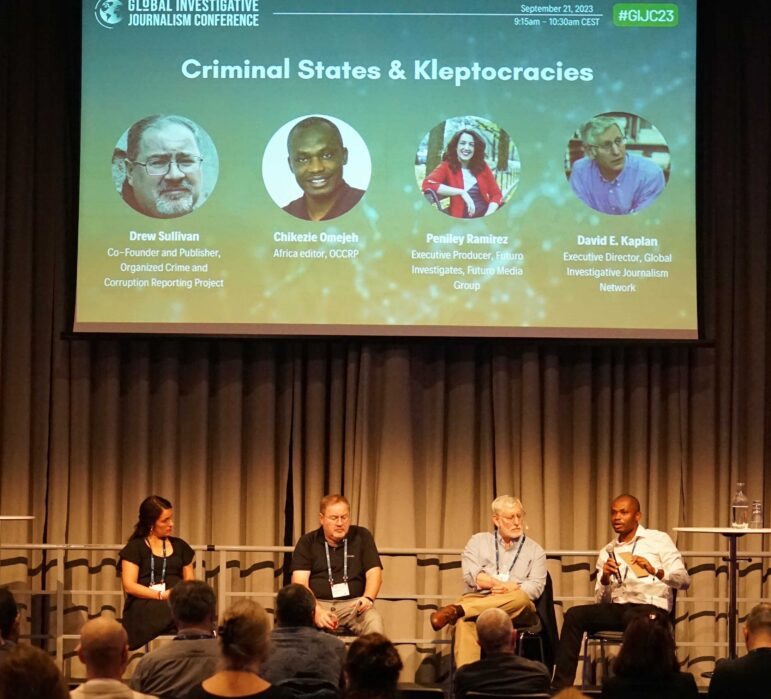

Investigative Stories that Can Be Replicated Around the World
Often, coming up with the idea for a story can be among the most challenging steps in investigative reporting. But great investigative story ideas don’t necessarily have to be original ideas — because corruption, illicit activity, and abuses of power routinely share the same characteristics across borders and continents.
At the 12th Global Investigative Journalism Conference (#GIJC21), seven journalists around the world shared their story ideas and gave tips on how other journalists can replicate the same investigations in their home country.
Below are five of the ideas presented by the panelists and the methodology to report them. Or you can watch the full video of the panel.
1. Femicide
Nikolia Apostolou, GIJN’s Resource Center Director, said it is necessary to have a clear understanding of what the criteria are and what constitutes femicide in your own country to properly report it. “In some countries, for instance, the killing of women is not reported because it is not considered a crime,” she noted. “So, check how femicide is recorded in your country’s legal system.”
Beyond searching for data, Apostolou said you should educate yourself in how good or bad the data collection system in your country is. Find out if the police officers and medical professionals are trained on how to collect reliable data and if they can distinguish and record the type of homicide, the sex of the perpetrator and the victim, along with the motive and the relationship between the two. “In many rural areas crimes are not reported, or they are reported manually — and by the time records reach the police headquarters, they can be lost or mishandled,” she noted.
Illustrations are an innovative way to help readers make sense of your story — and protect the identity of often vulnerable sources. Savia Hasanova, data journalist at the School of Data Kyrgyzstan, said you should consider data visualization tools as charts and maps in storytelling rather than the actual photos of victims or crime scenes. “Forget actual body details,” she added. Also, post trigger warnings and disclaimers before and after your story is published.
Another tip for investigating femicide: do not work alone because you might not be able to process the entire data you will need for your story alone. Join forces with other journalists who can share the burden and also inspire you.
“Femicide stories are difficult to cover and may be triggering for reporters who have experienced past traumas,” explained Apostolou. So, interviewing survivors and family members can be tough. Therefore, reporters need to be prepared and watch their own emotional state during the investigation, because it will determine the quality of your output at the end of the day.
There are several sources you can rely on when investigating cases of femicide, according to Apostolou and Hasanova. Among them:
- Law enforcement agencies
- Court decisions
- Criminal press releases
- National femicide observation centers
- The police
- Activists
- The United Nations Office on Drug and Crime (UNODC)
- Femicide Watch
2. Land-Grabbing
Investigations into seizures of land can be difficult and physically dangerous because criminal groups and powerful government corporations are often involved. In addition, the affected people are typically reluctant to speak out because they fear retribution. How then do journalists investigate land-grab issues when no one wants to talk about it?
Naziha Syed Ali, an assistant editor at Pakistan’s Dawn newspaper, said the best reporting techniques include winning the trust of locals and using publicly available documents and digital mapping tools.
“Get eyewitnesses testimonies from people and documentary evidence about their claim on contested land.” she said. “Journalists can get so bogged down in the legal minutiae and land records that the human suffering becomes secondary and the end result doesn’t grab the readers.”
Ali also advised to build connections with external groups, including non-governmental organizations that work with Indigenous communities, and with human rights lawyers who often handle cases of illegal deprivation of land. To dig further into the legal aspects of a land seizure story, try poring through court papers to determine wrongdoing.
3. Pension System Corruption
In some countries, the payment of pensions for workers remains a major problem and one that deserves investigation by journalists. But it rarely draws sufficient coverage. In July, independent economic reporter Luisa Garcia Tellez co-led a cross-border investigation that revealed how workers in nine Latin American countries have contributed roughly $500 billion to their pension systems, but have little idea as to what that money was used for over the years.
She said it is important to involve other journalists and experts as teammates rather than sources and leverage national freedom of information acts (FOIA) to broaden the story. “Reach your potential partners with materials already obtained via FOIA or refusal agreements by officials,” she said. “Explain to your partners how they can get the most out of the internal tool created for them.”
4. COVID-19
Beyond its impact on the health of millions of people globally, the COVID-19 pandemic has also been a source of graft and corruption worldwide. Rowan Philp, reporter at GIJN, pointed to a scheme uncovered by journalists where high-ranking public officials in Latin America received “courtesy” vaccine doses before the public did, as part of an influence campaign by Chinese companies conducting vaccine trials in those countries.
“Peru’s Salud con Lupa found that hundreds of politicians, academics, and others with influence over vaccine procurement – plus their families — were secretly inoculated,” Philp noted. Dubbed “Vacunagate,” this investigation into how elites were able to cut the inoculation line in exchange for helping Chinese vaccination marketing efforts was replicated by reporters in other Latin American countries.
As a result, he pointed out that reporters in any country that has hosted Chinese vaccine trials should check for excess doses in that nation’s drug import datasets, and look into executive access by Chinese embassy staff. They may find that normally ethical officials were complicit in this new form of corruption.
5. Spread of US “Dark Money”
Zeynep Sentek, a Turkish journalist working with UK-based openDemocracy, has spent time investigating how the US right-wing spends “dark money” around the world. Her data-driven investigation combined building a new dataset with ongoing reporting across borders.
Sentek’s project found that right-wing lawyers and politicians closely associated with former US president Donald Trump have also funded campaigns against same-sex marriage and legal abortion outside of the US.
“They hosted training on how to lobby against LGBT and same-sex education,” Sentek explained. “They spread misinformation in Latin America, including about COVID-19 and about reproductive health. And we also found that they send millions to Russian lobbyist groups with links to Putin’s regime.”
Sentek said the US nonprofit world has trillions of dollars in assets, and is active around the world, but it goes widely unreported on. Journalists in other countries can explore what this money is being used for locally and how it is impacting domestic policy choices.
She recommended ProPublica’s Nonprofit Explorer, which can be used to find IRS 990 forms (US tax forms filed annually by nonprofit organizations) and openDemocracy tracking tools to find data sets. However, when the data is not available, she advised journalists to build their own data sets and to go beyond those figures to find human-interest stories.










